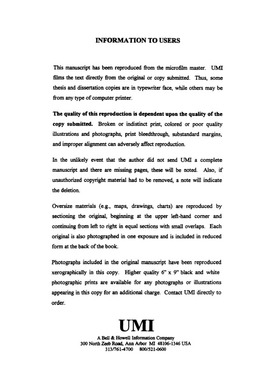| dc.contributor.advisor | Klebba, Phillip E., | en_US |
| dc.contributor.author | Jiang, Xunqing. | en_US |
| dc.date.accessioned | 2013-08-16T12:29:59Z | |
| dc.date.available | 2013-08-16T12:29:59Z | |
| dc.date.issued | 1998 | en_US |
| dc.identifier.uri | https://hdl.handle.net/11244/5610 | |
| dc.description.abstract | Since Waring & Werkman documented a microbial requirement for iron in 1944, much progress has been made in understanding how microbes assimilate this mundane but biological precious metal. The proteins involved in iron transport can now be grouped functionally across several microbial systems. It is now well known that under iron deficiency bacteria coordinately derepress several iron-uptake systems composed of an outer membrane receptor, a periplasmic protein, and several inner membrane-associated proteins. The function of the receptor is to bring the siderophore to, and through, the cell envelopes. The transport of iron across the outer membrane requires energy. TonB is thought to provide functional link between the inner membrane electrochemical potential to active transport of ferric siderophore complexes through high-affinity outer membrane receptors. | en_US |
| dc.description.abstract | In this dissertation, the location of the TonB-box domain of FepA has also been localized. Our results indicate that these TonB-box residues are mostly buried in OM bilayer. It is very likely that they form a transmembrane strand which is consistent with the model for the membrane topology of FepA proposed on the basis of sequence analysis and binding of monoclonal antibodies. Our results rule out the postulated direct contact between TonB and TonB-box of FepA in periplasmic space and let the nature of TonB action become more enigmatic. | en_US |
| dc.description.abstract | In this dissertation, a novel physical methodology (ESR spectroscopy in vivo) has been developed. The time-resolved operation of the FepA was observed in vivo with electron spin resonance spectroscopy by monitoring the mobility of covalently bound nitroxide spin labels. We found that the ligand binding surface loop of FepA, which normally closes its transmembrane channel, exhibited energy-dependent structural changes during iron and toxin (colicin) transport. These changes were not merely associated with ligand binding, but occurred during ligand uptake through the outer membrane bilayer. The results demonstrate by a physical method that gated-porin channels open and close during membrane transport in vivo. Our results also suggest that opening and closing of this TonB-dependent gated porin is temperature dependent. | en_US |
| dc.description.abstract | The FeEnt receptor, FepA, is best characterized among TonB-dependent siderophore receptors. Its region of ligand binding has been localized. The model of FepA structure has been established and used to predict other TonB-dependent receptor protein structures. Aside from FepA, little knowledge exists about how these proteins recognize and internalize ligands. Previous work in Dr. Klebba's laboratory, confirmed by others, established that FepA is a TonB-dependent gated porin. | en_US |
| dc.format.extent | xiii, 176 leaves : | en_US |
| dc.subject | Iron Physiological transport. | en_US |
| dc.subject | Biology, Microbiology. | en_US |
| dc.subject | Chemistry, Biochemistry. | en_US |
| dc.subject | Ligands. | en_US |
| dc.subject | Bacterial cell walls. | en_US |
| dc.subject | Iron Receptors. | en_US |
| dc.title | Conformational dynamics and structure of FepA, a ligand-gated channel in the bacterial outer membrane. | en_US |
| dc.type | Thesis | en_US |
| dc.thesis.degree | Ph.D. | en_US |
| dc.thesis.degreeDiscipline | Department of Chemistry and Biochemistry | en_US |
| dc.note | Source: Dissertation Abstracts International, Volume: 59-03, Section: B, page: 1096. | en_US |
| dc.note | Major Professor: Phillip E. Klebba. | en_US |
| ou.identifier | (UMI)AAI9826291 | en_US |
| ou.group | College of Arts and Sciences::Department of Chemistry and Biochemistry | |
